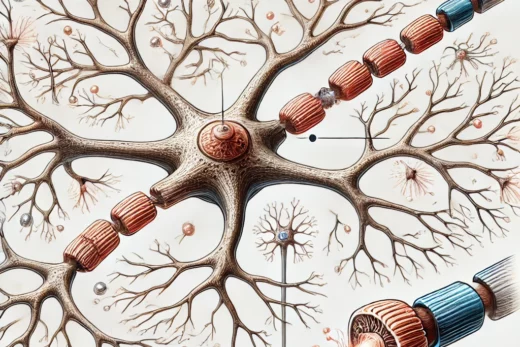
Neuro-Inspired Framework for Recursive Cross-Domain Adaptation
Abstract
This paper proposes an extended interpretation of the SynEVO architecture, originally designed for efficient cross-domain spatiotemporal learning. By integrating principles from swarm intelligence, recursive learning systems, and modular replication, we outline how SynEVO can be scaled into a distributed, self-adaptive system. This reinterpretation positions SynEVO not as a standalone learner, but as a fundamental building block in the construction of evolving, recursive multi-agent systems capable of long-term adaptation, task generalization, and distributed knowledge propagation.
1. Introduction
The design of AI systems capable of generalizing across tasks and domains remains a central challenge in machine learning. SynEVO—a neuro-inspired spatiotemporal evolutional framework—addresses this by introducing modular learning components that mimic cognitive functions like curriculum learning and dynamic memory allocation. However, current implementations assume isolated learners.
This paper proposes an extrapolation: that SynEVO’s architecture can serve as the internal structure of a distributed agent, with each instance acting as a node in a recursive, swarm-based adaptive system. Through replication, communication, and environment-aware feedback, this architecture can evolve toward open-ended learning and scalable behavioral diversification.
2. SynEVO: Original Framework Summary
SynEVO’s original contributions include three primary components:
2.1 Elastic Common Container (ECC)
A memory module that aggregates generalizable patterns across domains. It evolves over time and allows agents to preserve and reuse knowledge efficiently.
2.2 Task-Independent Personality Extractor (TIPE)
This module isolates domain-specific features and adapts the model’s behavior for individual task contexts without overwriting shared knowledge.
2.3 Adaptive Dynamic Coupler (ADC)
A controller that determines whether new information is novel or valuable enough to be retained in the ECC. It governs selective adaptation and supports efficient continual learning.
Together, these modules enable agents to learn new tasks rapidly while preserving performance on older ones, with improved generalization in cross-domain settings.
3. Extending SynEVO into Distributed Systems
3.1 Modular Replication (Digital Mitosis)
SynEVO’s modularity allows its architecture to support replication without retraining. Given a new task domain or environment, an agent instance can be cloned and initialized with a subset of the ECC, maintaining past knowledge while allowing task-specific differentiation through TIPE adaptation.
This supports digital mitosis—where agents replicate themselves with minor variance, akin to evolutionary divergence in biological systems. These clones can explore divergent strategies or domains, and later feed back successful adaptations.
3.2 Recursive Curriculum Evolution
Unlike fixed curricula, recursive systems dynamically reorder training experiences based on task novelty, failure modes, or collective performance. Cloned agents can prioritize task progression based on shared metrics and self-assessments, continually optimizing their learning trajectory without centralized instruction.
This facilitates distributed, recursive learning loops where new agents not only consume the ECC but contribute refined knowledge back to it.
4. Swarm Intelligence as Coordination Mechanism
Swarm intelligence introduces a coordination layer between distributed SynEVO agents. In this setting, multiple agent instances act as cooperative nodes that:
- Share learning deltas and ECC updates
- Evaluate task performance asynchronously
- Vote or converge on shared adaptation strategies
- Mutate architectures or behaviors through localized decisions
Each agent behaves semi-autonomously, but contributes to a collective intelligence gradient across the network.
Swarm-level behaviors may include:
- Specialization: Agents self-select into roles based on performance or environmental conditions
- Behavioral Convergence: High-performing strategies are adopted by peers through peer communication
- Recovery: Failing agents request retraining seeds from the swarm memory
5. Memory Efficiency and Generalization Metrics
In prior experimental results, SynEVO demonstrated up to:
- 42% increase in generalization capability across unseen domains
- Over 78% memory efficiency compared to continual learning baselines
When deployed as part of a swarm system:
- ECC redundancy is minimized through distributed caching
- Memory constraints can be adjusted dynamically by offloading task-specific extractors to lower-priority nodes
- Agents can be selectively paused, retrained, or replaced based on swarm-level priority metrics
6. Integration with Existing ML Ecosystems
SynEVO-Swarm is compatible with existing ML architectures under the following conditions:
- Modular neural components with pluggable memory buffers (ECC)
- Lightweight agent wrappers for distributed execution
- Communication middleware for inter-agent message passing (e.g. gRPC, Redis pub-sub, or custom peer networks)
It is not model-architecture-specific. The recursive swarm design can be applied to:
- Transformer-based models
- Graph neural networks
- Hybrid symbolic systems
This adaptability makes SynEVO-Swarm viable for applications in:
- Traffic and infrastructure forecasting (spatiotemporal)
- Multi-agent simulations and reinforcement learning
- Real-time decision-making in dynamic, multi-domain environments
7. Future Work and Open Challenges
Several open research areas remain:
- Agent-to-agent ECC merging and conflict resolution
How should agents reconcile contradictory deltas or overlapping experiences? - Prompt-based curriculum mutation
Can agents autonomously generate or mutate their own task instructions to stimulate learning? - Semantic drift in long-term adaptation
How do we detect and prevent knowledge corruption or overfitting to obsolete priorities? - Security and integrity in swarm learning
What safeguards exist against malicious agents injecting invalid knowledge into ECC structures?
8. Conclusion
The SynEVO architecture provides a robust foundation for domain-adaptive learning. When scaled into distributed systems using principles from swarm intelligence, recursive self-modification, and modular replication, it transitions from a neural model to an adaptive framework for distributed, evolving AI systems.
This reinterpretation has potential applications in:
- Distributed robotics
- Autonomous sensing networks
- Cross-domain virtual agents
- Continuous learning in volatile environments
We recommend further research into integrating adaptive ECC strategies with decentralized agent control mechanisms, and formalizing a protocol for recursive agent evolution at scale.



